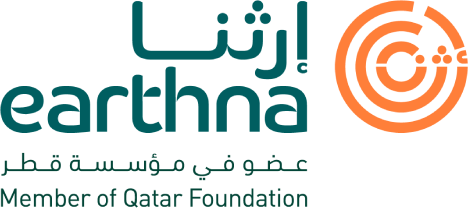
As we face a future defined by growing populations and increasing urbanization, the development of sustainable cities is paramount. And as urban populations grow, city planners grapple with the colossal task of ensuring that urban spaces are livable, resilient, and sustainable. This becomes particularly significant in hot and arid climates, where industry-standard planning methods are simply not enough.
Hot and arid regions present a unique set of challenges for urban planners and architects, including water scarcity and frequent, intense climatic events like heat waves. These challenges mean that building sustainable and livable communities in these regions requires a nuanced understanding of the local climate and ecosystem. While traditional architectural designs historically considered this, the advent of rapid urbanization and modern city planning, along with the utilization of standardized materials and car-centric layouts, has led to a disconnect between a city's architecture and its natural climate. Additionally, once established, the built environment is not always fully utilized and infrastructure often does not meet the needs and lifestyles of a city’s populace.
To bridge these gaps, urban planners and policy makers are progressively turning to technology-based solutions, grounded in detailed data and analysis such as the Internet of Things and smart city technologies. Social analytics also have a huge role to play in informing these solutions by offering evidence-based insights that hold the potential to profoundly change the approach to sustainable urban policy and planning.
Social Data Analytics and Neighbourlytics
Social data analysis evaluates data from social platforms and digital technologies to understand people's behaviors, needs, and relationships in an urban context. It moves beyond the physical and technical aspects of urban planning to consider the complex human factor, providing an informed, people-centric approach to development. At the forefront of this are companies such as Neighbourlytics, that harness social data and employ cutting-edge proprietary technology to delve deep into social trends, patterns, and sentiments. This in-depth analysis then empowers decision-makers to make informed choices, ultimately contributing to improved city development and an enhanced quality of life for all residents.
More specifically, by analyzing digital footprints through ethically sourced data from social media, e-commerce, and other online platforms, these tools provide real-time insights into community behavior, needs, and preferences. This helps planners take a hyper-local approach, designing precincts that are not only environmentally sustainable, but also attuned to the individual needs of each community. In practical terms, this might mean that planners can design public spaces that foster social interaction by creating shaded walkways to mitigate heat, or implement water-efficient systems that suit the local environment and culture.
Using Qatar as an example, social data analytic tools, including Neighbourlytics, can analyze data on people's outdoor activity during periods of extreme heat. This data could inform the creation and placement of green spaces and shaded areas to facilitate outdoor activity even in high temperatures, contributing to active and vibrant communities by alleviating heat stress. Moreover, social data analytics can guide the efficient use of resources, by highlighting community behaviors that contribute to high water or energy consumption. Based on this information, targeted interventions and infrastructure can be designed to promote and ensure conservation, whilst supporting thriving communities.
Traditional Architecture and Modern Planning: A Unified Approach
While social data analytics offers an exciting new dimension, it must be complemented by traditional architectural methods that have evolved over centuries in hot climates. The fusion of age-old wisdom with modern technology can create sustainable urban spaces that are both energy-efficient and culturally relevant.
Historically, architectural methods accommodated the local climate through a blend of human ingenuity and environmental awareness. For instance, cooling techniques, like wind towers and courtyard designs, have been used in hot and arid countries for centuries. These architectural features can be optimized in modern cities through analytics to ensure they are applied where they will be most effective. By combining these tried-and-tested methods with cutting-edge tools like Neighbourlytics, urban planning can be adaptive, synergistic, and visionary.
Incorporating indigenous knowledge into social data analytics is not merely a valuable addition—it is a critical component that enriches the overall understanding of community dynamics. Indigenous and traditional communities often have a deep and nuanced understanding of their local environment, especially in hot and arid climates, where adaptation to extreme conditions has been essential for generations. Tapping into this wisdom can provide insights into cultivating community relationships, establishing sustainable practices, and methods of natural resource management which may not be apparent through conventional data sources.
Beyond this, incorporating indigenous knowledge that respects and honors the cultural heritage and intellectual property of our ancestors leads to a more inclusive and ethical approach to urban development and ways of living that are in line with a community’s own identity.
Embracing the Synergy of Approaches and the Way Forward
The development of sustainable cities in hot and arid climates is a complex undertaking that requires a multifaceted approach. Social data analytics, epitomized by technologies like Neighbourlytics, offers an innovative pathway to address this challenge. To bring this practice to life, Earthna (a member of Qatar Foundation) recently partnered with Neighbourlytics to perform an analysis of its innovation district Education City (EC), leveraging the Doha-based campus as a testbed for implementing data and heritage informed social and environmental improvements.
This initiative reimagines EC’s urban spaces in the hot and arid context by drawing on real-life data and benchmarking it against similar districts world-wide. And drawing on the learnings from the project, it provides the foundation for evidence-based policy advice which can be implemented throughout the country.
By weaving together technology, research, indigenous knowledge and community engagement, Earthna’s partnership with Neighbourlytics exemplifies a forward-thinking strategy that holds the potential to shape cities into more than just physical spaces—they can become thriving, sustainable ecosystems that serve as models for the future. As the world grapples with pressing challenges like climate change and urbanization, initiatives like this underscore the significance of holistic urban planning approaches.
By: Nihal Mohamed Al-Saleh, Earthna Center for a Sustainable Future
